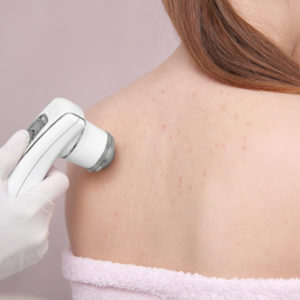 General Dermatology
General Dermatology
Acne
Acne is a common skin disorder that can affect the face, neck, back, chest, and shoulders. It occurs with variable severity not only in teenagers, but also in adults. Many prescription treatments for acne are available.
Contact Dermatitis
Contact dermatitis is characterized by a rash and itching that occurs after the skin is exposed to a substance that you may be sensitive or allergic to. Common causes are nickel, rubber additives, dyes, preservatives, fragrances, and poison ivy.
Eczema/Atopic Dermatitis
Eczema is a common inflammatory skin condition defined by dry, scaly patches on the skin that are very itchy. It can occur in patients with a personal or family history of asthma or allergies. Often, it is present at birth and can start as scaly patches on the cheeks of a newborn.
Folliculitis
Folliculitis is an inflammation of the hair follicle. Folliculitis is commonly caused by bacteria, yeast, or fungi. Mechanical folliculitis results from chronic frictional exposure.
Fungal Infections
There are a variety of yeast and fungi that can cause skin and nail infections. Fungal infection of the nails is termed onychomycosis. Fungal cultures and skin biopsies can be performed to diagnose these infections. Both topical and oral antifungal medications are available for treatment.
Hair Disease
Many conditions, diseases, and improper hair care can result in excessive hair loss. While daily shedding is normal, people who notice their hair shedding or “falling out” in excessive amounts should consult a dermatologist for proper diagnosis and treatment.
Herpes Infection
Herpes is caused by the herpes simplex virus (HSV) and it can cause painful eruptions around the mouth, nose, genital area, and buttocks. Herpes infection often recurs and has a predilection for the same location. The herpes family virus that causes chicken pox can also cause shingles. Herpes zoster is the medical term for shingles, and it usually starts with a painful tingling sensation followed by the eruption of blisters in a linear or grouped array. The virus is very contagious in the active stages, and treatment should be sought immediately.
Hyperhidrosis
Hyperhidrosis is a medical condition in which a person sweats excessively and unpredictably. Hyperhidrosis most commonly affects the underarms, palms, and soles, although it can occur on any body surface. It is caused by overactive sweat glands which may be triggered by an increase in temperature, emotions, anxiety, or other factors. Treatments include topical prescription antiperspirants, oral anticholinergic drugs, and BOTOX®.
Keloid Scars
A keloid is an inappropriate healing response to trauma whereby thick, firm scars are formed. They are benign lesions that are often associated with itching and pain. Treatments include intralesional corticosteroid injections and surgical correction.
Melasma
Melasma is an acquired brown pigmentation of the skin most commonly involving the face. It occurs in predisposed women, occasionally in men, and is thought to arise from a hormonal imbalance. It is common in women taking oral contraceptives, during pregnancy, or while going through menopause. Treatment involves the use of prescription skin bleaching creams as well as sun avoidance.
Molluscum Contagiosum
Molluscum contagiosum is a viral infection that presents as small skin-colored to pink bumps on the skin. It is spread by autoinoculation, scratching, and touching and considered highly contagious. It can occur at any age. Children tend to develop the lesions on the face, upper trunk, and extremities. In adults, lesions often appear on the abdomen, genital area, and thighs, and are considered a sexually transmitted disease. Treatment options include cryosurgery with liquid nitrogen, curettage, and cantharidin application.
Nail Disease
Nail problems constitute up to 10% of all dermatologic conditions. Nail growth is affected by disease, nutrition, medications, trauma, chronic illness, fever, and the aging process. If you see a change in color, texture, shape, or thickness of your nails, follow up with a dermatologist for evaluation.
Pseudofolliculitis Barbae
Pseudofolliculitis barbae (PFB) is the medical term for razor bumps. It is most common in men, on the face in the beard area. It is also common in those who have curly hair. After the hair is shaved, the sharp ends of the hair curl back into the skin and cause an inflammatory reaction. The bumps that form can often get infected and occasionally cause scarring.
Psoriasis
Psoriasis is a common, chronic, inflammatory disease of the immune system with predominantly skin and joint involvement. It is characterized by patches of raised, reddish skin covered with a silvery-white scale. There are various forms of psoriasis and a variety of treatment options available.
Rosacea
Rosacea is a common but poorly understood disorder of the facial skin that presents as flushing, persistent redness, development of acne-like lesions, and visible blood vessels. Common rosacea triggers include sun exposure, emotional stress, hot weather, cold weather, wind, overheating, alcohol consumption, and intake of spicy foods. Both medical and cosmetic treatments are available for rosacea.
Seborrheic Dermatitis
This is an extremely common skin disorder which can cause your scalp, sides of your nose, eyebrows and skin behind your ears to become red, flaky, itchy, and easily irritated. Seborrheic dermatitis is often called cradle cap when it is present on the scalp of a newborn. It is thought to involve the overgrowth of a common yeast. While some over-the-counter products can be somewhat helpful, we will often recommend prescription shampoos and lotions to help alleviate the itching and excessive flaking.
Skin Cancer
There are multiple types of skin cancer. Basal Cell Carcinoma (BCC) is the most common skin cancer in the United States. It occurs on areas of chronic sun exposure such as the face, scalp, neck, and upper body. Squamous Cell Carcinoma (SCC) is another type of skin cancer that also occurs on sun exposed areas. Malignant Melanoma is a very serious skin cancer because it can metastasize to other parts of the body. Melanomas usually present as darkly pigmented lesions with a highly irregular appearance. Some moles can progress into melanomas and therefore, if you notice any changes in your existing moles, you should make an appointment for evaluation. The best way to prevent skin cancer is by wearing sun protective clothing and using a sunscreen with a minimum SPF of 30.
Skin Tags
These benign moles are commonly present on the neck, underarms, breasts, and inner thighs. They are genetic in nature and can be irritated by necklaces and undergarments. Due to their benign nature, removal is cosmetic. Removal via scissor excision or electrocautery can be performed.
Warts
These growths are caused by a virus called the Human Papilloma Virus or HPV. Several different kinds of warts exist, including those that occur on the hands, feet, and genital area. Transmission is by simple contact. Treatment options include cryosurgery with liquid nitrogen, cantharidin application, topical imiquimod, electrodessication, and intralesional Bleomycin.
